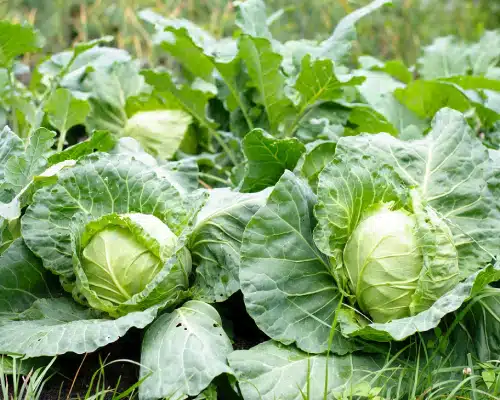Incorporating plenty of fruit and vegetables into your diet is one of the best ways to live a healthier lifestyle. We’ve put together some tips for shopping for fruits and vegetables that will help save you money, make your produce purchases last longer, and help you choose the healthiest fruit and vegetables for you and your family.
#1 Buy fruits and vegetables according to the season
Buying produce that is in season is cheaper, fresher and more nutritious. When you buy fruit and vegetables that are not in season locally, it means they’ve been brought in from elsewhere. More travel time = more time to lose nutrients along the way, more money spent on transport and a greater carbon footprint.
#2 Buy frozen fruit and veg
Contrary to popular belief, fresh isn’t always best. Most frozen fruit and veg are flash-frozen at peak freshness, which means that you’re still getting all the same nutrients as fresh (and sometimes even more!). You’re also getting produce that’s cheaper, and you’re not faced with the problem of it going bad before you eat it.
Top tip – Try frozen fruit chunks in your smoothies for a richer, creamier texture.
Is it cheaper to buy frozen fruit or fresh fruit?
Some fruit can be cheaper to buy frozen rather than fresh, including:
- Fruit that is out of season
- Berries
- Speciality fruits
Buying frozen fruit can mean fewer trips to the shops, which helps you save on petrol and reduces your carbon footprint. It also reduces the costs associated with food waste.
Why is frozen fruit cheaper?
Frozen produce tends to be cheaper than fresh produce because it takes much longer to spoil. It’s also easier to store than fresh produce, which needs to be harvested, packed, shipped, and sold in a short space of time. Frozen fruit can also be cheaper due to an oversupply in the market when products that were destined for fresh sale can be diverted to freezing to reduce waste.
#3 Support local farmers’ fruit and veg markets
Buying local produce at farmers’ markets supports the local economy and lets you find out from the source how it’s been grown. Vegetable shopping and buying fresh fruit at the farmers’ market generally means that you’re getting produce that has been harvested more recently than the fruit and veg you find on supermarket shelves too.
#4 Browse at the back
What is the best way to purchase fruits and vegetables?
Supermarket staff are often taught to rotate produce, putting newer fresher items at the back so that the older items at the front sell first. Carefully reach to the back of the shelf when choosing your produce, which also ensures that fewer people have handled it, and don’t forget to check the expiry date.
#5 Pause before buying pre-cut and pre-packed produce
Unless you’re really stretched for time when it comes to meal prep, try to avoid buying pre-cut fruit and veg. Not only does it cost a lot more, but it also may not be as nutritious. Typically, the skin or rind of the plant locks in nutrients and helps prevent it from deteriorating, so it should only be removed right before eating.
It’s also best not to buy pre-packed fruit and vegetables. Rather select loose produce and pack it into your own cotton mesh bag to minimise single-use plastic and polystyrene packaging.
#6 Wash produce thoroughly – but not right away
Every piece of produce you put in your mouth must be washed thoroughly under running water (even if it claims to be ‘ready to eat’). However, don’t wash everything at once as soon as you get home from your grocery shopping; wash your produce just before you eat it to preserve its freshness and lifespan.
#7 Who needs perfect-looking produce?
That wonky tomato or gnarly carrot can be just as healthy as the good-looking, symmetrical kind. When choosing your produce, rather judge it by the peel (nice and tight, not wrinkly) and the weight. The fruit or vegetable should seem heavy for its size, hinting at the good water content.
#8 Spread out your shopping days
If possible, try not to do your grocery shopping on a Saturday like everyone else! Most deliveries arrive at supermarkets earlier in the week, giving you a better chance of getting fresher goods on these days. Better yet, hit the farmers’ market for a pleasant morning out!
#9 Head for the plant nursery
Instead of buying all your fruit and vegetables, why not try growing some of your own? Even if you don’t have a garden, you can start by growing fresh herbs in pots for a new flavour sensation for your food, remembering that some plants have edible flowers too. If you do have a garden, veggies like spinach and carrots grow well year-round. Frilly lettuces also look pretty amongst your flower beds. Not only will you have your own organic produce, but you may develop a new hobby too!
Read more about growing in your garden in our 5-part series.
Summary: How to buy vegetables and fruit
- Buy seasonal fruits and vegetables
- Buy frozen fruit and veg
- Support your local farmers’ market by buying vegetables and fruit there
- Browse at the back of the shelves for the freshest produce
- Avoid buying pre-packaged or pre-cut produce
- Wash your fruit and veg thoroughly before using it
- Don’t be put off by imperfect shapes and sizes
- Shop earlier in the week or find out your store’s main delivery day
- Grow your own fruit and veg
We hope you’ve found these tips for buying better fruits and vegetables helpful! Quality produce is so important to us, which is why we promote sustainable farming through soil health, which benefits the Earth, the farmer, the community and the consumer. Find out more about what we do: https://zylemsa.co.za/.

About the Author: Alex Platt
Alex is Business Development Manager at Zylem. He’s inspired by the potential of regenerative farming and takes a special interest in the technology and products that are moving agriculture in a more sustainable direction.

